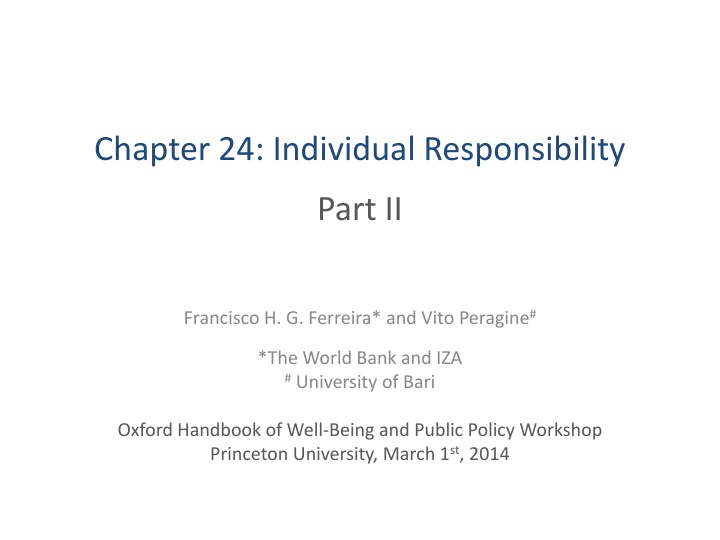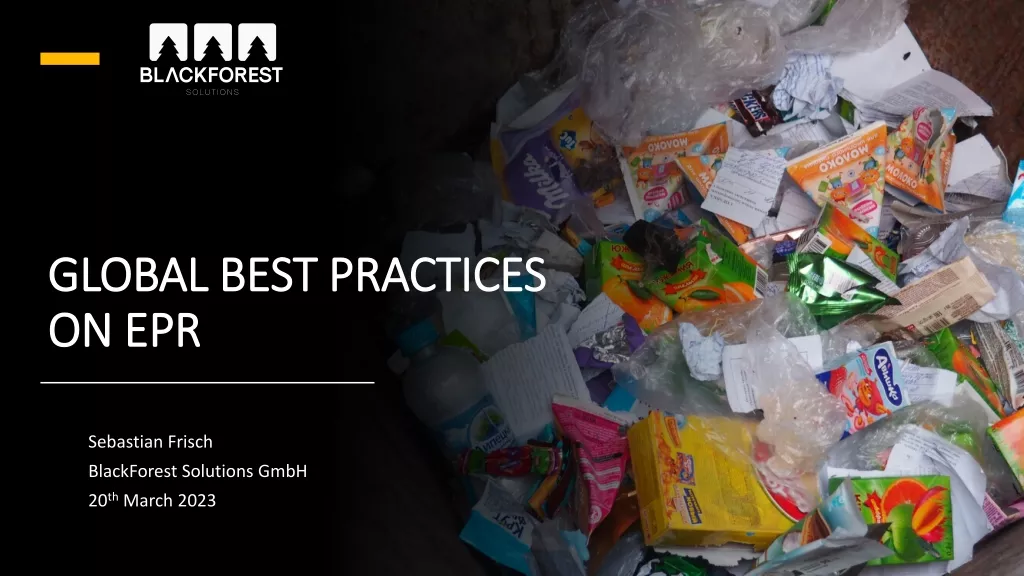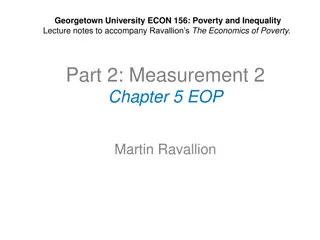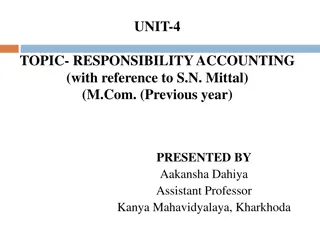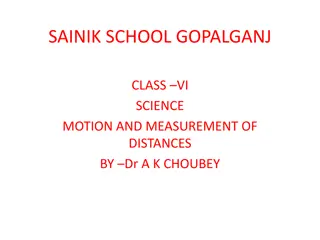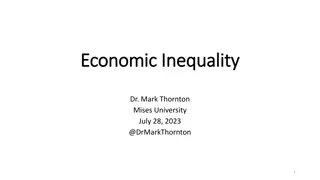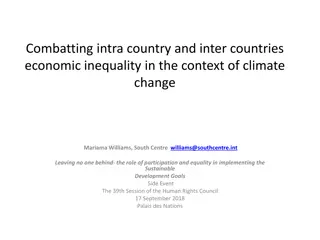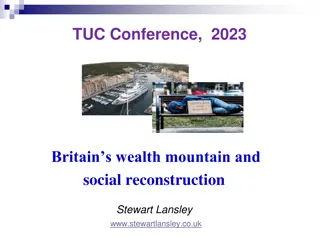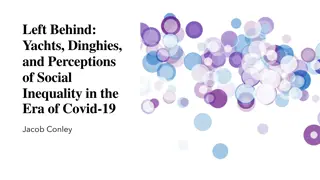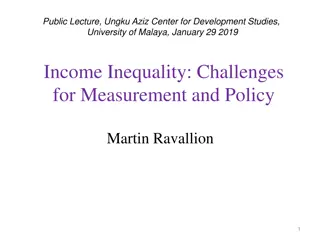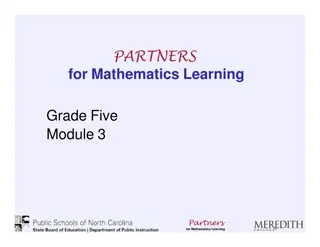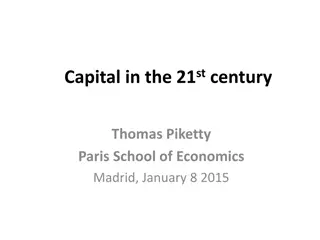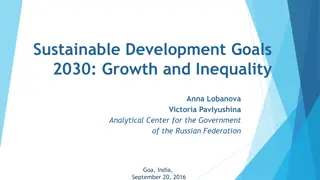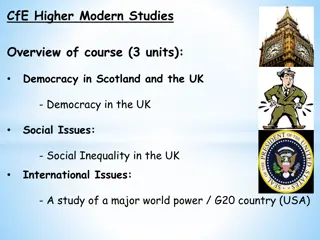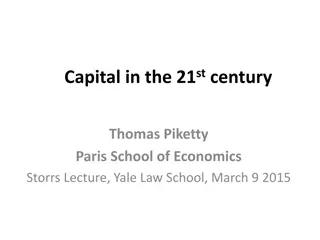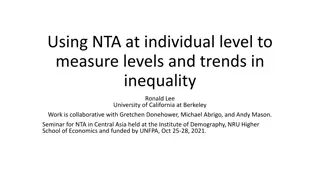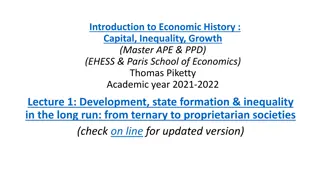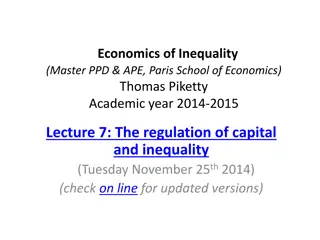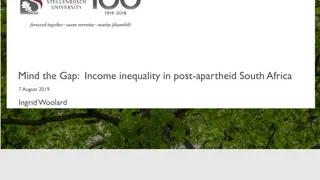Measurement of Inequality in Individual Responsibility
This chapter delves into empirical applications of measuring inequality of opportunity, discussing various approaches and interpretations. It explores the concept of lower-bound estimators for true inequality of opportunity, emphasizing the importance of considering omitted circumstances. The discussion also touches on the challenges posed by rich information on circumstances and the need for parametric estimates in certain cases.
Download Presentation

Please find below an Image/Link to download the presentation.
The content on the website is provided AS IS for your information and personal use only. It may not be sold, licensed, or shared on other websites without obtaining consent from the author.If you encounter any issues during the download, it is possible that the publisher has removed the file from their server.
You are allowed to download the files provided on this website for personal or commercial use, subject to the condition that they are used lawfully. All files are the property of their respective owners.
The content on the website is provided AS IS for your information and personal use only. It may not be sold, licensed, or shared on other websites without obtaining consent from the author.
E N D
Presentation Transcript
Chapter 24: Individual Responsibility Part II Francisco H. G. Ferreira* and Vito Peragine# *The World Bank and IZA #University of Bari Oxford Handbook of Well-Being and Public Policy Workshop Princeton University, March 1st, 2014
Section 5: Empirical applications All known empirical applications of the measurement of inequality of opportunity follow the indirect approach. Some are based on norm-based approaches in the spirit of the direct unfairness and fairness gap matrices e.g. Almas et al. (2011); Devooght (2008) There are also examples of within-tranches inequality applications. e.g. Checchi and Peragine (2010)
But the between-types inequality version of the indirect approach has been used most often. X~ ~ ): For all j {1,...,m} and for all i {1,...,n}, = ( . ij x i BT ???? =?( ???) ???? = ?( ???) Simply compute: ? ?
Caveat 1: A lower bound estimate Interpretation: IEO (L or R) is a lower-bound measure of inequality of opportunity Omitted circumstances cannot lower it. Whenever the dimension of the observed vector Cis less than the dimension of the true vector C*, then ?( ???) is a lower-bound estimator of true inequality of opportunity: the inequality that would be captured by the same indices if the full vector C* were observed. Intuition: Suppose only race is observed (blacks, whites hispanics), but in reality gender also matters: Formal proof in Ferreira and Gignoux (2011).
Caveat 1: A lower bound estimate Interpretation: IEO (L or R) is a lower-bound measure of inequality of opportunity Omitted circumstances cannot lower it. Whenever the dimension of the observed vector Cis less than the dimension of the true vector C*, then ?( ???) is a lower-bound estimator of true inequality of opportunity: the inequality that would be captured by the same indices if the full vector C* were observed. Intuition: Suppose only race is observed (blacks, whites hispanics), but in reality gender also matters: Formal proof in Ferreira and Gignoux (2011).
Caveat 2: Parametric estimates When the information on circumstances is rich enough, the number of types may become too large to estimate either IEO non-parametrically. Follow Bourguignon et al. (2007) and Ferreira and Gignoux (2011) in proposing a simple model: ( , ( C g E = ) = , , y f C E u ) v For the purpose of simply measuring inequality of opportunity, it suffices to estimate the reduced form: ( y = ) , C =C + y Say, by OLS: ~ = i C Can then compute parametrically smoothed distribution : i ( ) ~ = Leading to the parametric estimate: IOL I i
Forty-one country estimates Figure 2: inequality of economic opportunity: lower-bound estimates Inequality of economic opportunity index (IEO-R) Note: Estimates come from different studies and are not strictly comparable. Source: Brunori et al. (2013)
Some correlations (i) Figure 3: Inequality of economic opportunity and the level of development Note: Estimates come from different studies and are not strictly comparable. Source: Brunori et al. (2013)
Some correlations (ii) Figure 4: Inequality of opportunity and income inequality Income Inequality (mean logarithmic deviation) Note: Estimates come from different studies and are not strictly comparable. Source: Brunori et al. (2013)
Section 6. Implications for poverty and development The rate of economic development should be taken to be the rate at which the mean advantage level of the worst-off types grows over time. [ ] I look forward to a future number of the WDR that carries out the computation, across countries, of this new definition of economic development (p.243). Roemer, John E. (2006): Review Essay, The 2006 world development report: Equity and development , Journal of Economic Inequality (4): 233-244 Define an opportunity profile: = 1 2 K ... * , ,..., T T T 1 2 K And an opportunity-deprivation profile: 1 J J = j = j *= 1 2 J J k , ,..., ,..., | ; ; and T T T T ... , k J N N N 1 2 j J j j 1 1
Opportunity-deprivation profiles The Brazilian profile, by income per capita Brazil s opportunity-deprivation profile in 1996: six poorest social types (adding up to 10% of the population), defined by pre-determined background characteristics. Share of national population 0.06776 Mean advantage (HPCY) 105.9 Ratio of overall mean 0.261 0.287 Father's occupation agricultural worker Father's education none or unknown Mother's education none or unknown Estimated population 2,276,662 Type 1 Ethnicity black and mix-raced Place of birth Nordeste or North 2 black and mix-raced agricultural worker Upper primary (5) or more none or unknown Sao Paulo or Federal District 1,417 0.00004 116.5 3 black and mix-raced agricultural worker none or unknown lower primary Nordeste or North Nordeste or North Nordeste or North Nordeste or North 313,664 0.00934 136.6 0.337 4 black and mix-raced agricultural worker Lower primary none or unknown 352,729 0.01050 136.9 0.338 5 black and mix-raced agricultural worker Upper primary (5) or more none or unknown 7,564 0.00023 144.2 0.355 6 black and mix-raced Other none or unknown none or unknown 2,063,415 0.06141 144.5 0.356
Opportunity-sensitive poverty measurement Should there be a poverty measure that is sensitive to I. Op., in the same way as FGT(2) or the Sen Index are sensitive to outcome inequality? Brunori, Ferreira, Lugo and Peragine (2013) Anonymity axiom restricted to within types Transfer axiom replaced by separate inequality aversion axioms within and across types. Tension between IOA and IAW is resolved by introducing a hierarchy:
Opportunity-sensitive poverty measurement Poverty levels across eighteen European countries: standard headcount against opportunity-sensitive headcount
The development objective The measurement distinction between the ex-ante and ex-post approaches is related to the conceptual distinction between the equal opportunity policies of Roemer and van de Gaer: Roemer s Mean of mins 1 ( ) 0 = xk * arg max min k , e de Van de Gaer s Min of Means 1 ( ) = = k * arg max min , arg max min x e de VDG k k k 0 15
The development objective What is the policy objective for opportunity egalitarians? ( ) t s T s max min e ds T t t iT t , , subject to u u i T t t The choice of policies from a feasible set so as to maximize the future stream of advantage for the most disadvantaged type, subject to a no-deprivation constraint and to a feasibility constraint. Source: Bourguignon, Ferreira and Walton, JEI 2007.
The development objective Deconstructing the equitable development policy problem: Growth matters ( ) t s T s max min e ds T t t iT t , , subject to u u i T t t Permissible Policy Set: Technical feasibility and social acceptability Poverty eradication as a constraint . Rawlsian criterion. All weight on the least advantaged. Source: Bourguignon, Ferreira and Walton, JEI 2007.
And finally 1. The empirical literature on I. Op. is now moving beyond measurement, to the exploration of causal relationships: With economic growth (e.g. Marrero and Rodriguez, JDE, 2013) With public policy (van de Gaer et al., WBER forthcoming) 2. Measurement challenges still plague these new applications 3. but the empirical examples have led to inroads in the dialogue with policy makers.
